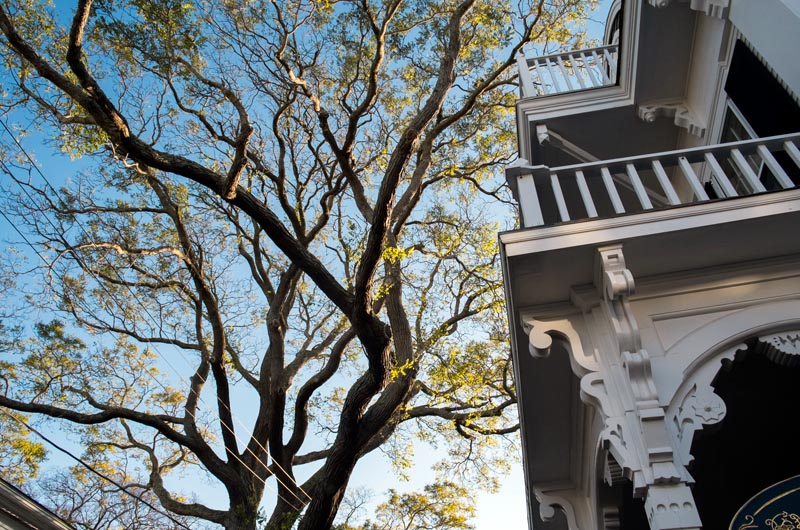In the wake of public outcry over a plan to build a garage next to a historic Edgartown pagoda tree, the conservation commission voted Monday to reconsider preliminary approval they gave for the garage.
The majestic pagoda tree, brought to the Vineyard as a seedling by a sea captain more than 175 years ago, is a popular tourist landmark. The tree is a public shade tree whose root system spreads beneath private property on the street that faces the harbor and is famous for its whaling captain homes.
The new owners of 29 South Water street are conducting major renovations to their property and want to build a garage above the tree’s root system.
In late October, the conservation commission voted to allow a cantilevered garage that would rest partly on an existing foundation and partly on two 12-inch support piers, in an effort to reduce the impact of the structure on the tree’s root system. Contractors representing the owners have supplied an elaborate plan to protect the tree, hydrate it and provide nutrients to its root system.
But on Monday, selectmen said the risk of damaging the tree was too great and asked the conservation commission to rescind their vote.
“It’s troublesome that we would take a chance like that,” said chairman Arthur Smadbeck. He called the pagoda, “an icon of Edgartown,” and pointed to an outpouring of comments in support of the tree on the Gazette’s website as an indicator of strong public interest.
Selectman Margaret Serpa agreed. She said in the case of most town shade trees that grow on private property, the town allows their removal but requires the homeowner to plant an equivalent tree in its place.
The pagoda tree is different, Mrs. Serpa said.
“This tree is irreplaceable and I just think we need to keep that in our minds,” she said.
Contractor Norman Rankow, who represented owners Thomas and Mary Folliard, said his team was also committed to the preservation of the tree.
“We are trying to put together a program that will help the tree going forward,” he said.
An arborist hired by the town has assessed the plan favorably, noting that the “cultivation/aeration process and fertilizer application will help improve the soil and the tree’s ability to counteract any negative effects of the construction and encourage root growth in that area.”
Selectmen recognized efforts to mitigate the impact of the garage, but emphasized that no one can guarantee that these measures would protect it from harm.
Mr. Smadbeck said everybody had done the best job they could do without considering another option: not building the structure at all.
“The tree has been there like that since 1837, wouldn’t that be the wiser course,” he said.
“I just think it’s interesting that you say [the property owners] have gone to all of this expense, but they are not willing to change their plan to accommodate the tree,” Ms. Serpa told Mr. Rankow.
Conservation commission members, who had been invited by the selectmen to hold a joint meeting, weighed in as well.
Jeff Carlson said despite four meetings held to discuss the issue, and the importance of the tree to the town residents, public comment was scarce.
“Had we had this kind of discussion in the meetings, I am sure we would have considered it more fully,” he said. He added that the commission had been inclined to go along with the testimony of the arborists, who seemed to think the tree would be okay. Still, he agreed that no one really knows what will happen.
“That tree canopy has been compromised over and over, over the last hundred plus years, but there is a tipping point, and could this last 700 square feet be the tipping point? We don’t know. We just don’t know,” Mr. Carlson said.
Stuart Lollis summarized the decision as a risk to reward ratio, where the reward is the garage.
He said if the pagoda tree stood next to the Whaling Church, and work needed to be done to renovate that structure, the reward might be greater. But in this case, “I don’t think the risk is worth the reward,” he said.
Ultimately, conservation commission member Christina Brown made a successful motion to revisit the issue.
“I would welcome another round of a much more detailed discussion,” Mrs. Brown said. Commission members said they would widely publicize upcoming meetings about the tree.








Comments (26)
Comments
Comment policy »